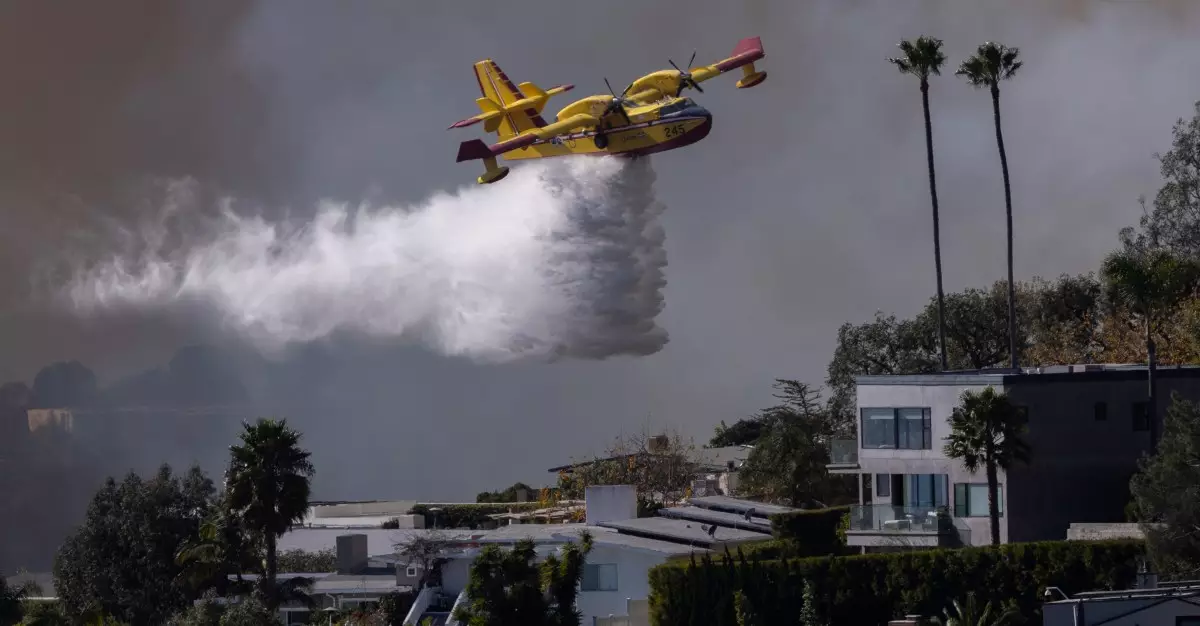The allure of drone technology is undeniable, offering a captivating blend of innovation and accessibility. However, with great technological advancements comes great responsibility, especially when lives and critical operations are at stake. Peter Akemann’s recent legal troubles underscore the severe implications of flying drones in restricted airspace. His actions not only endangered lives but also set in motion a series of legal and ethical questions around drone usage during emergencies.
On January 9, 2025, in the midst of battling the Palisades wildfires, Peter Akemann, a former chief technologist in the gaming industry, flew his drone beyond the legal flight parameters. Ignoring established Federal Aviation Administration (FAA) restrictions, Akemann piloted his DJI Mini 3 Pro approximately 2,500 meters away from his launch point, where he lost visual contact with the drone. This irresponsible act led to a collision with a Super Scooper firefighting plane, necessitating costly repairs and grounding the aircraft, critically impeding firefighting efforts in an already tense situation.
Now faced with the repercussions of his recklessness, Akemann has agreed to plead guilty, which could spare him from a year-long jail sentence in exchange for community service and restitution of approximately $65,000 to cover the repair costs to the aircraft. This situation raises important discussions around accountability and the responsibilities of drone operators, which cannot be overlooked.
A crucial aspect of this incident is the reliance on drone technology and the inherent safeguards that are supposed to prevent such reckless behavior. Akemann’s defense cites the failure of the DJI’s geofencing feature which ostensibly should have prevented him from entering a no-fly zone. Nonetheless, it is critical for drone operators to acknowledge that technological safeguards cannot wholly absolve them of responsibility. The erosion of the most restrictive geofencing capabilities by DJI has raised alarms, highlighting the need for drone manufacturers to prioritize safety protocols, especially when operating in sensitive areas.
Moreover, potential flaws in geofencing software bring forth the argument that operators must remain vigilant and aware of their surroundings, regardless of perceived technological assurances. Individual responsibility remains imperative in maintaining safety standards, especially when human lives are on the line.
Akemann’s professional background as a pivotal player in the video game industry adds layers to this narrative. His previous roles as president of Skydance Interactive and co-founder of Treyarch underscore a history of innovation and success in a high-stakes domain. However, such accomplishments did not shield him from making a grave mistake that could tarnish his reputation and career. The contrasts between his esteemed career and this incident spotlight issues of accountability; even seasoned professionals can make catastrophic judgments.
In the aftermath of the incident, Akemann’s legal team has expressed his remorse, indicating an understanding of the serious implications of his actions. While contrition can be a mitigating factor during court proceedings, it remains to be seen whether the courts will accept the plea agreement or impose more severe penalties.
This incident presents a broader concern: the growing misuse of drone technology across varied sectors. As drone enthusiasts and professionals gain access to more powerful and sophisticated tools, the potential for abuse increases hand-in-hand with ignorance of legal limitations. The conversation needs to shift toward enhancing public education on drone regulations to mitigate future instances of negligence.
While many drone pilots abide by regulations, the Aeronautics industry often finds itself grappling with the consequences of those who disregard safety protocols. As a society that is increasingly leaning towards embracing drone technology, it becomes imperative to ensure that relevant regulations are not only comprehensive but also effectively communicated to end-users.
The case of Peter Akemann serves as a cautionary tale underscoring the repercussions of drone misuse within critical emergency situations. As technology continues to evolve, so too should the regulations governing its use. The combination of technological oversight with a strong commitment to personal responsibility is essential to protecting lives and maintaining the integrity of operations in high-stakes environments. Drones hold immense potential, but with this potential comes the necessity for greater awareness and adherence to safety protocols amongst all operators. The industry must collectively work towards a future where safety and innovation coexist harmoniously.

